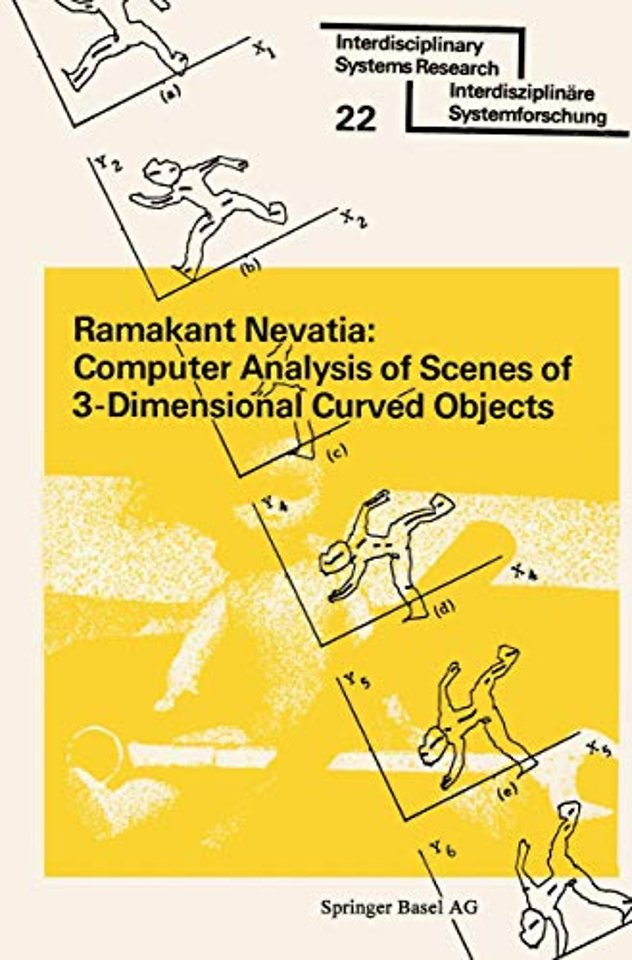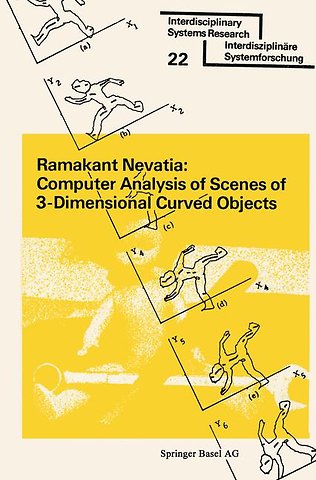Computer Analysis of Scenes of 3-Dimensional Curved Objects
Paperback Engels 1976 1976e druk 9783764308452Samenvatting
1.0 2 The attention then turned to the problem of "Body separation", i.e. separation of occluding bodies in a scene (See [Guzman), [Falk), and [Waltz)). Grape ([Grape)) combined the separation of bodies with recognition, by removing parts of the scene recognized as belonging to a known body. All of these techniques were designed to work with polyhedral objects only, and extensively use the properties of edges and vertices. Though some impressive results have been reported ([Waltz], [Grape)), and perhaps some useful abstractions can be made, the specific techniques used fail to generalize to a wider class of objects. Among previous work on curved objects, B.K.P. Horn ([Horn)) presented techniques for extracting three dimensional depth data from a TV image, using reflection characteristics of the surface. Krakauer ([Krakauer]) represented objects by connections of brightness contours. Ambler et al ([Ambler)) describe experiments with simple shapes, including curved objects, using relations within a two-dimensional image. However, none of these efforts really addresses the problem of "shape" representation and description. Work on outdoor scene analysis is also concerned with non-polyhedral objects ([Bajcsy], [Yakimovsky]), but again no attention has been paid to shape analysis.
Specificaties
Lezersrecensies
Rubrieken
- advisering
- algemeen management
- coaching en trainen
- communicatie en media
- economie
- financieel management
- inkoop en logistiek
- internet en social media
- it-management / ict
- juridisch
- leiderschap
- marketing
- mens en maatschappij
- non-profit
- ondernemen
- organisatiekunde
- personal finance
- personeelsmanagement
- persoonlijke effectiviteit
- projectmanagement
- psychologie
- reclame en verkoop
- strategisch management
- verandermanagement
- werk en loopbaan

